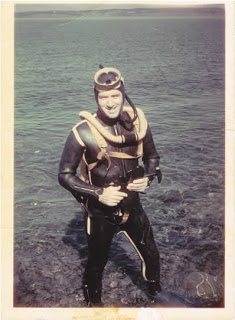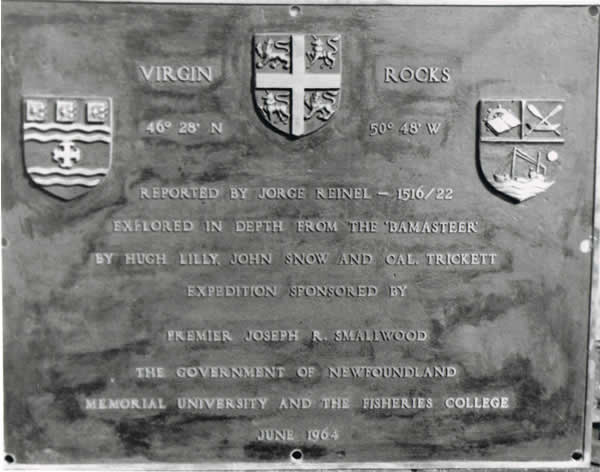50th anniversary of Grand Banks sea adventure


In the life of every university there are legends − tales of high adventure and discovery. This summer marked the 50th anniversary of one of those events.
In June of 1964, a small group from Memorial University approached Premier Joey Smallwood for funding for a diving expedition to conduct geological research on the Grand Banks.
For 400 years the Grand Banks had contributed to the economy of Newfoundland, but no scientist had ever “set foot” on them. The hope was to learn more about them by using scuba divers to explore the more shallow parts and to collect samples and data about the banks’ terrain, rock type and bottom flora and fauna.
Hugh Lilly, a now deceased professor at Memorial, led the government-supported expedition. His son, Chris Lilly, has compiled an historical record of this event, which he has turned into a screenplay. The documents include photos and dive journals written in his father’s own hand.
“Reading his journal and the other materials was like getting a whole new perspective on my family history and a new appreciation and awareness of my father and who he was,” he said. “He tells of how, on that first trip, a nasty storm drove the tiny ship back to the shore, at which point the majority of seasick and exhausted participants left the ship and returned to St. John’s.”
But Prof. Lilly, along with diver John Snow and biology student and deckhand Ron Scaplen, in a ship captained by Mat Whalen, a former member of the House of Assembly under Premier Smallwood, persevered and went back out to become the first man to stand, and indeed, take a stroll, on the Grand Banks.
The event is commemorated by a large bronze plaque the team placed in a rock trench 11 fathoms below sea level and bearing the coats of arms of the province and the Fisheries College (now known as the Marine Institute).
George Lilly, a nephew of Hugh and one of the four participants driven ashore by seasickness, said that “to dive on  the shoals of the Grand Banks in the mid-1960s took a great deal of imagination and verve, and in retrospect, had a certain romance.” But the true value was in the scientific evidence collected during that trip and the ones that would follow over the next two years before Hugh Lilly died in 1966.
the shoals of the Grand Banks in the mid-1960s took a great deal of imagination and verve, and in retrospect, had a certain romance.” But the true value was in the scientific evidence collected during that trip and the ones that would follow over the next two years before Hugh Lilly died in 1966.
“It may be surprising for many of us to recall that the theory of continental drift was still highly controversial in the mid-20th century,” he said. “The theory gained increasing support during the 1950s and early 1960s, and became subsumed into the theory of plate tectonics.
“One of the new lines of evidence came from paleomagnetism, which looks at changes in the Earth’s magnetic field over time as recorded in rocks. Hugh and his geological collaborators were interested in the geological relationships of the rocks to the east of the Avalon Peninsula. For paleomagnetic studies, one must know the orientation of the bedrock. The only way to do that on the Grand Banks in the mid-1960s was to dive to the bottom and record the orientation of the rock before removing samples.”
The first trip may not have turned out the way the participants expected, but Chris Lilly says it did not deter his father from trying again. Subsequent trips proved to be much more fruitful.
“They became part of a much larger effort on both sides of the Atlantic to consolidate evidence for continental drift/plate tectonics on land as well as underwater,” he said. “Memorial would go on to play a key role in determining that the Appalachian Mountains in the U.S., the Long Range Mountains in Newfoundland and the mountains of Wales and Scotland were once part of a single range prior to the opening of the Atlantic rift.”